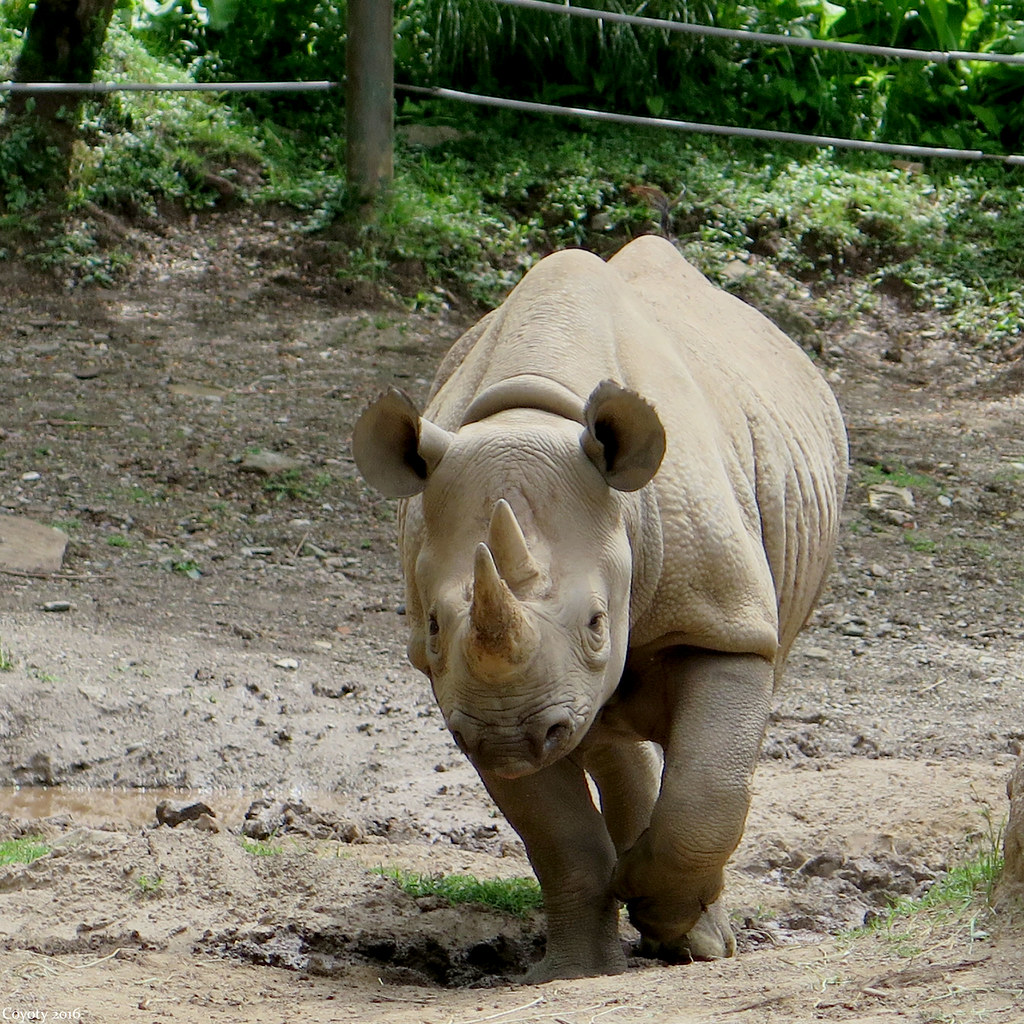#Diceros bicornis
Video
Black Rhino by Coyoty
Via Flickr:
Diceros bicornis. At the Pittsburgh Zoo in Pittsburgh, PA.
#Pittsburgh Zoo & PPG Aquarium#Pittsburgh#Pennsylvania#PA#zoo#nature#animal#rhino#rhinoceros#fauna#black rhino#black rhinoceros#Diceros bicornis#wild#life#wildlife#biodiversity#Animal Planet#square format#square#flickr
1 note
·
View note
Text
2050’ye Kadar Bir Çok Tür Yok Olacak
2050’ye Kadar Bir Çok Tür Yok Olacak
2050’ye Kadar Bir Çok Tür Yok Olacak
Dünya tarihinde 5 kitlesel yok oluş meydana geldi. Bilim insanlarına göre 6. kitlesel yok oluş çoktan başladı. Araştırmalar, şu anda yaşayan türlerin %40’ının 2050 yılına kadar yok olabileceğini ön görüyor.
27 yaşındaki orangutan anne, yeni doğan bebeğini tutuyor. 6 Ekim’de dünyaya gelen kız bebek, bu yıl Kuzey Amerika hayvanat bahçelerinde beklenen iki…

View On WordPress
#5 kitlesel#5 kitlesel yok oluş#6. kitlesel yok oluş#Amur leoparı#Bir Çok Tür Yok Olacak#Diceros bicornis#Dünya Doğayı Koruma Vakfı#Elephas maximus sumatranus#IPCC#IUCN#kara gergedan#kitlesel yok oluş#Kritik Tehlike Altında#Panthera pardus orientalis#Panthera tigris sondaica#Phocoena sinus#Pogo abelii#Sumatra fili#Sumatra orangutanı#Sunda kaplanı#Tehdit Aktındaki Türler Kırmızı Listesi#Uluslararası Doğayı Koruma Birliği#Uluslararası İklim Değişikliği Paneli#vaquita#WWF#yok oluş#yunus
0 notes
Text

Eastern black rhinoceros Diceros bicornis michaeli
Observed by ashwinv, CC BY
80 notes
·
View notes
Text

A very big baby! (Black Rhino - Diceros bicornis)
#vulture culture#skulls#my collection#bones#vulture culture uk#taxidermy#animal skull#animal skulls#vultureculture
73 notes
·
View notes
Text
Animal of the Day!
Western Black Rhinoceros (Diceros bicornis longipes)

(Photo from Save the Rhino International)
Extinction Date- 2011
Habitat- Western and central Africa
Size (Weight/Length)- 1,400 kg; 3.75 m
Diet- Leaves; Branches; Shrubs; Grasses
Cool Facts- The western black rhinoceros was specially adapted to the dry shrubland of western Africa. Their upper lip was prehensile and allowed for careful manipulation of thorny bushes to eat the leaves. Their dark skin was highly susceptible for sunburn, often resulting in mud stained rhinos. Protection was originally strong for the western black rhinoceros, leading to an increased population in the 1930s. As these protections loosened, poachers killed the rhinos in their thousands for their horns that were, and still are, falsely believed to have medicinal purposes. By 2000, only 10 rhinos survived and the last one was spotted in 2006. Today, African rhinos are the second most poached animal in the world. National parks with armed guards are working to protect the remaining black and white rhinoceros that still roam savannahs today.
Rating- 13/10 (Their horns could measure 1.5 meters long.)
#animal of the day#animals#mammals#rhinoceros#rhino#wednesday#october 11#western black rhinoceros#black rhinoceros#black rhino#biology#science#conservation#the more you know#extinct#extinctober#white rhinoceros#white rhino
116 notes
·
View notes
Text

Diceros bicornis. Struik Pocket Guides for South Africa: Mammals. Written by John Skinner. Illustrated by Penny Meakin. 1988.
Internet Archive
149 notes
·
View notes
Text
"Nature's Spear"
2024

Black Rhinoceros (Diceros bicornis)
In the mood to draw rhinos. It's curious how in the two African species the horns sometimes grow ridiculously long.
The pose and perspective made this fellow challenging to draw and to shade, but it came out quite alright.
#black rhino#rhino#rhinoceros#perissodactyla#animals#animal art#wildlife#wildlife art#art#photoshop#artists on tumblr#mexican artist#autistic artist#dartxo
4 notes
·
View notes
Text
A cursorial rhinoceros stops grazing to briefly look out over the Thaumasia Steppe. What could it have heard to disturb its meal? Any number of dangers lurk in the grass.
Like all extant Martian Rhinocerotidae, the Scrapebuck (controversial official Anglic name) is covered in a fur coat capable of insulating from harsh chilling winds. Despite its far slimmer build and elongated neck, this animal is actually slightly taller than the extinct black rhinoceros (Diceros bicornis) of Earth. However, the keen and nearly blind observer alike will note that is where the comparisons cease- aside from an almost equine build convergently evolved for its ecological niche, the scrapebuck uses its horns far more for uprooting tubers and roots than charging- ill advised for such a lightweight animal. Herds of up to fifty animals are a not uncommon site , and in winter will converge into megaherds for migration across the rust-colored landscape
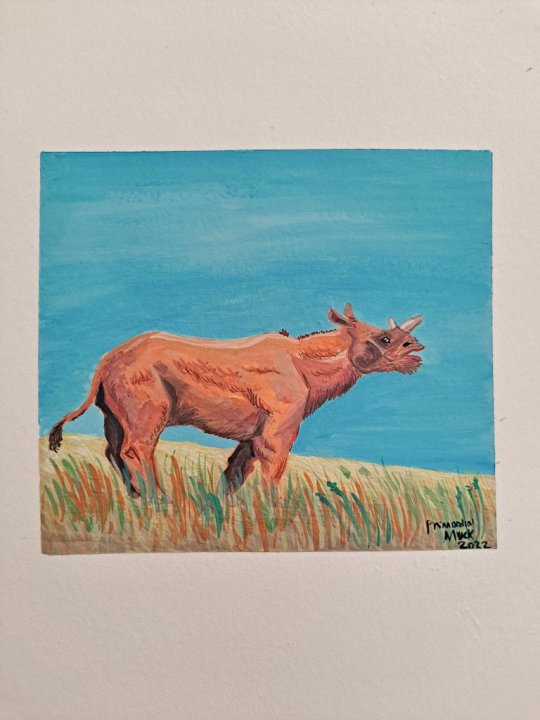
37 notes
·
View notes
Text
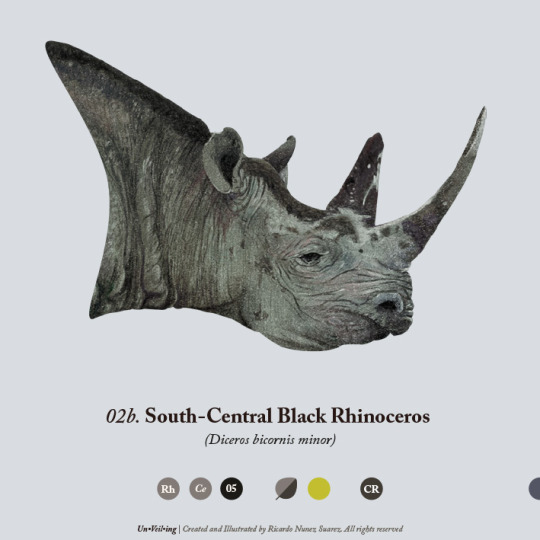
South-Central Black Rhinoceros(Diceros bicornis minor)
Also called south-central hook-lipped rhinoceros. The most common subspecies Black Rhinoceros. However, it is also critically endangered.
*Photo Credit: Roman
*Credit: www.wikiwand.com/en/South-central_black_rhinoceros
_____________________________________________
If you like the content please like and subscribe. It will help me a lot!
Check out the Instagram account for different animal content or my store for nice posters. Shipping worldwide.
#black rhino#rhinoceros#rhino#illustration#drawing#scientific illustration#illo#wild animals#wildlife#animals#mammals#animal#artist on tumblr#cute animals drawing#wild animal#wild life#south africa#africa#mammal#illustration scientifique#inforgraphics#nature illustration
18 notes
·
View notes
Text
The Western Black Rhinoceros
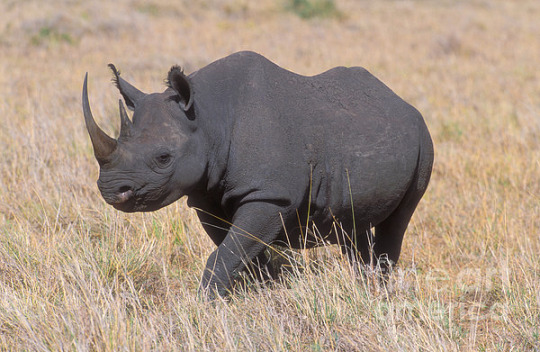
Date of Extinction: 2011
Scientific Name: Diceros bicornis longipes
Where found: South Africa & Zimbabwe
Reason for Extinction: Illegal Wildlife Trade
0 notes
Text

A young chimpanzee peeks through the leaves in Taï National Park, in Côte d’Ivoire 🇨🇮. Photograph By Michael Nichols
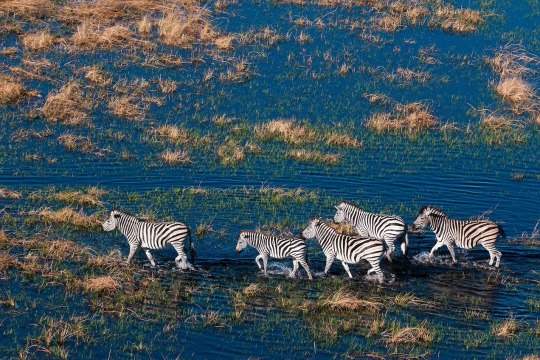
An aerial view of plains zebras (Equus quagga) walking in a flood plain in Okavango Delta, Botswana 🇧🇼. Photograph By Sergio Pitamitz
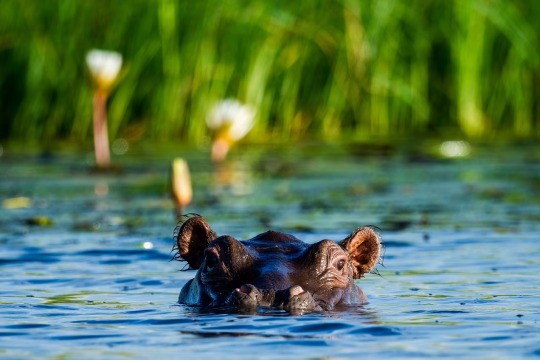
A Nile Hippopotamus surfaces at the edge of a reed bed, in Chobe National Park, Botswana 🇧🇼. Photograph By Jason Edwards
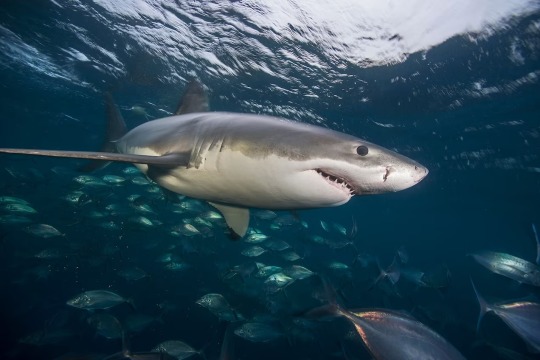
A great white shark swims in waters off the Neptune Islands, New York, United States 🇺🇸. Photograph By Brian J. Skerry
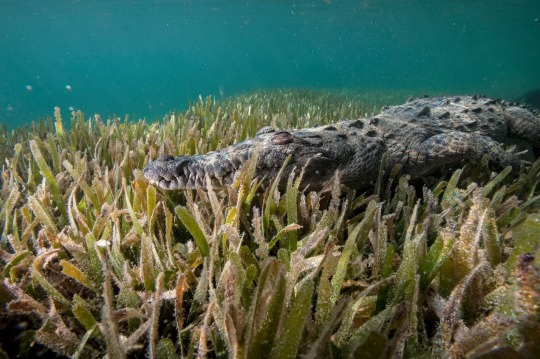
A submerged American crocodile (Crocodiles acutus) lives in the dense mangroves within Cuba's Gardens of the Queen National Marine Park, Cuba 🇨🇺. Photograph By Jennifer Hayes

Atlantic spotted dolphins swim in the waters off Bimini in the Bahamas 🇧🇸. Photograph By Brian J. Skerry

White rhinoceroses (Diceros bicornis) in Kenya's Lewa Wildlife Conservancy, Kenya 🇰🇪. Photograph By Frans Lanting
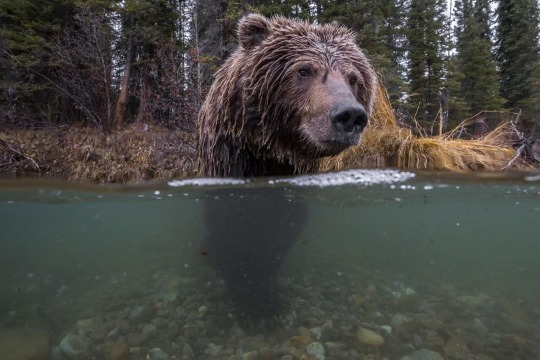
A grizzly bear fishes for salmon in the Fishing Branch River in Yukon Territory, Canada 🇨🇦. Photograph By Paul Nicklen
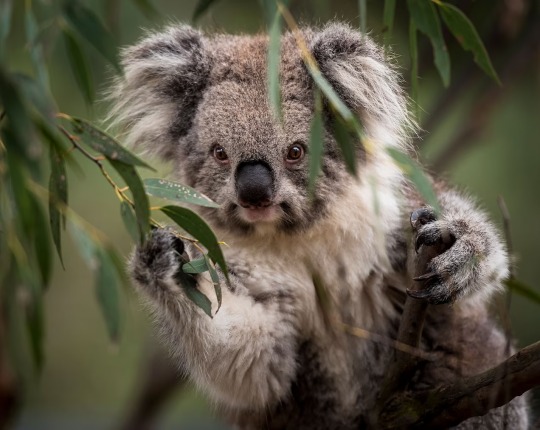
Portrait of a Victorian koala (Phascolarctos cinereus) in Australia 🇦🇺. Photograph By Doug Gimesy
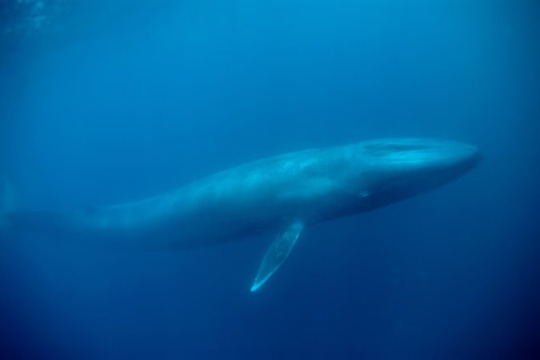
An endangered blue whale with unique color patterns and markings, off Costa Rica 🇨🇷. Photograph By Flip Nicklin
0 notes
Text
Historic sampling of a vanishing beast: population structure and diversity in the black rhinoceros
Published 10th August 2023
Results of generated and analysed whole-genomes from 63 black rhinoceros museum specimens collected between 1775 and 1981.

Range-wide population genomic structure of black rhinoceros historic and modern sample
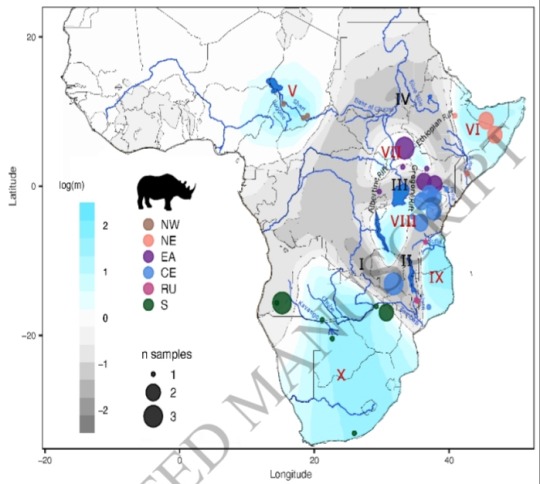
Effective migration across the historic range of the black rhinoceros and summary of the inferred historic population structure in the black rhinoceros
Source:
0 notes
Text

Southern black rhinoceros Diceros bicornis bicornis
Observed by max_baumgarten, CC BY-NC
15 notes
·
View notes
Text
Natural dispersal is better than translocation for reducing risks of inbreeding depression in eastern black rhinoceros (Diceros bicornis michaeli)
http://dlvr.it/SrRtNZ
0 notes
Text
Animal of the Day!
Eastern Black Rhinoceros (Diceros bicornis)

(Photo from WWF)
Conservation Status- Critically Endangered
Habitat- Kenya; Rwana; Northern Tanzania
Size (Weight/Length)- 1406 kg; 3.6 m
Diet- Leaves; Fruit; Woody plants
Cool Facts- Eastern black rhinoceros have one of the longest horns of any rhino species. Having no natural predators when fully grown, these rhinos often graze in the open and ignore predators such as lions and leopards. Capable of running 55 kilometers per hour, their combined size makes them a literal battering ram. Sadly, the population of eastern black rhinos has dropped 90% in less than 100 years with a little over 6,000 individuals due to poaching for their horns. Luckily, due to several national parks, increased conservation awareness, and armed guards protecting their home, eastern black rhinos are slowly increasing in numbers.
Rating- 13/10 (Education saves lives.)
#Animal of the day#Animals#Mammals#Rhinoceros#Rhino#Sunday#September 18#Eastern black Rhinoceros#biology#science#conservation#the more you know
44 notes
·
View notes
Photo

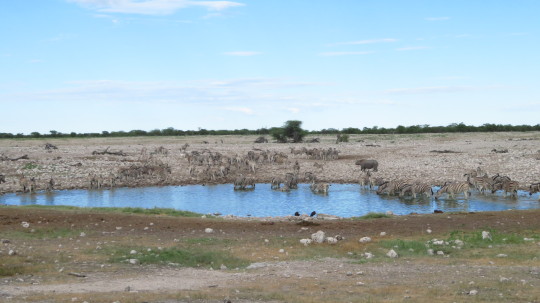

Steppenzebras & Spitzmaulnashorn | Plains zebras & black rhinoceros
Equus quagga & Diceros bicornis
[Etosha]
#Steppenzebra#Plainszebra#Equusquagga#Spitzmaulnashorn#Blackrhinoceros#Blackrhino#Hooklippedrhinoceros#Hooklippedrhino#Dicerosbicornis#Zebra#Nashorn#Rhinoceros#Rhino#Etosha#Namibia#Afrika#Africa
1 note
·
View note
